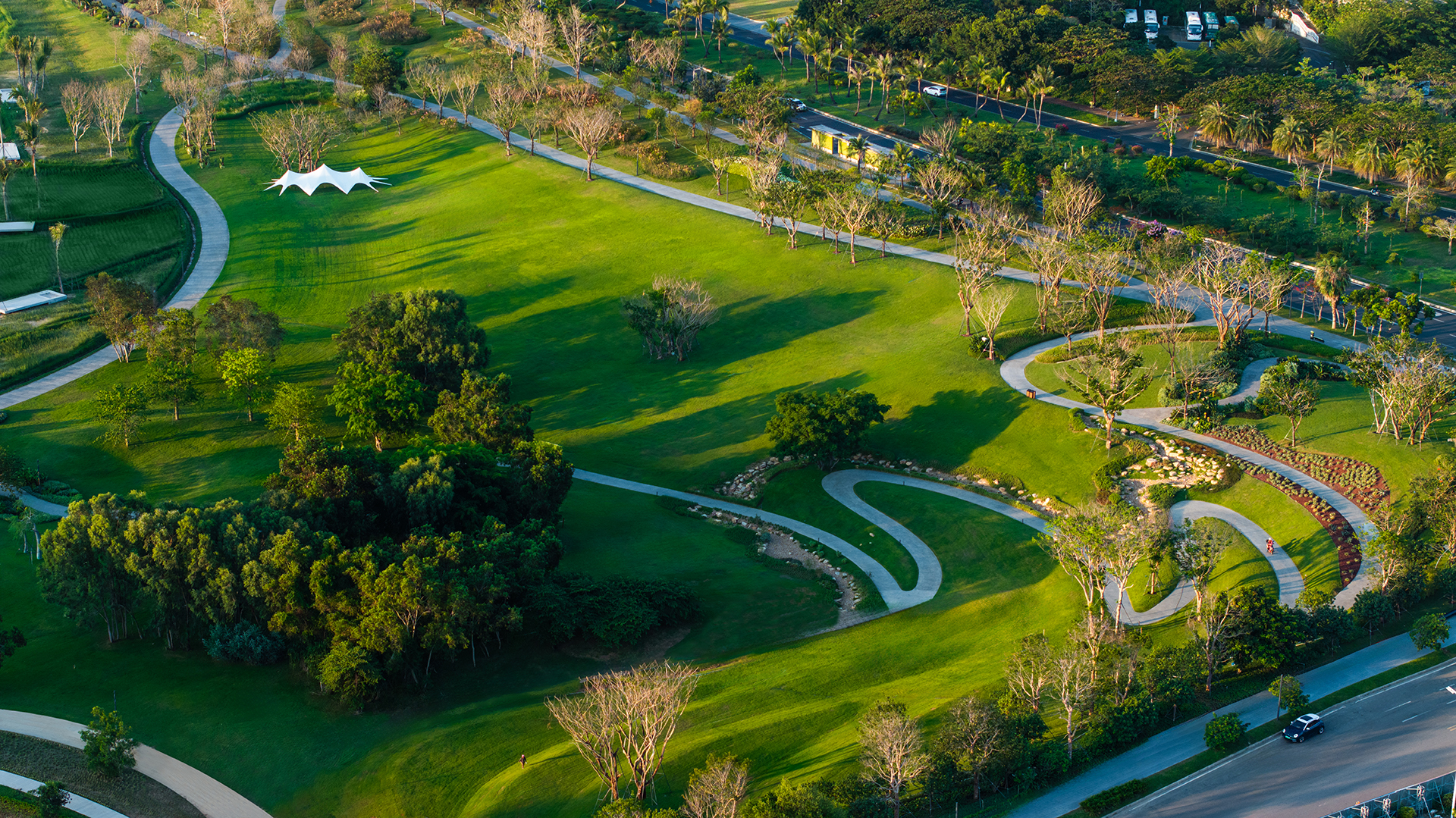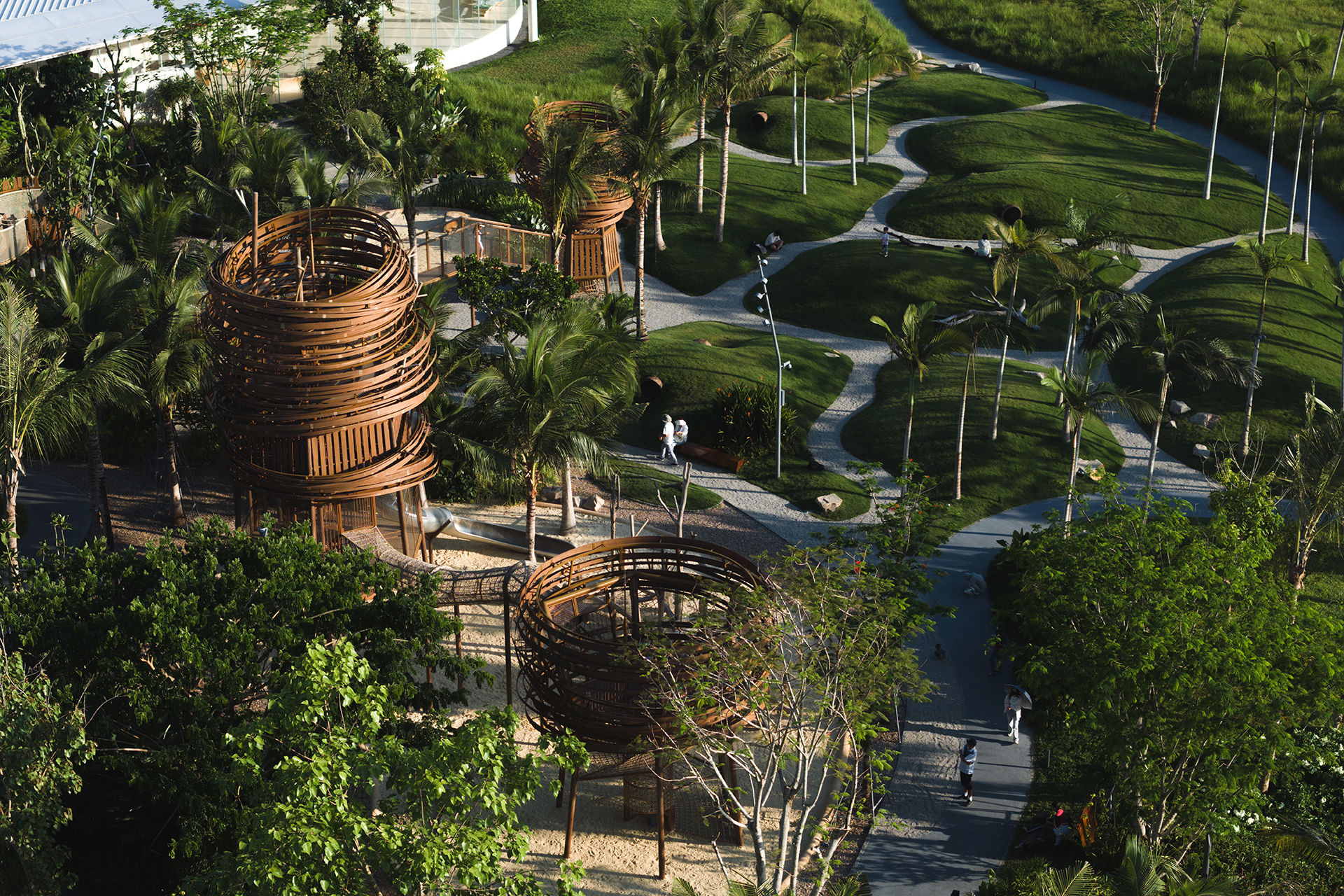Haitang River ECO Park Phase One
AECOM Asia Company Limited


Short description
The Haitang River is an artificially excavated tidal river where brackish and freshwater converge. Based on its current conditions, ecological restoration, river management, and vitality infusion are carried out. The first phase covers a total length of 4.43km, a total research area of 1.63 million square meters, and a design area of 1.23 million square meters.
The project aims to establish environmental resilience through extensive soil improvement, ecological planting, forest protection, ensuring water quality, wetland restoration, and habitat creation. The goal is to repair the river system's overall ecological function, maintain its self-renewal and vitality, and maximize resilience value at the ecological, social, and economic levels.
The design prioritizes ecological treatment, aiming to enhance biodiversity and restore habitats for animals and plants. By restoring the river ecosystem and resilience system, it connects the riverside with the urban slow traffic system, activates the waterfront, and stimulates the development of surrounding industries and economy. The goal is to create an ecological, cultural, vibrant, and future-oriented urban landscape for Haitang.
The design employs nature-based solutions to improve soil conditions and combine them with plant cultivation to create soil suitable for the growth of various plants. This approach is based on local climate conditions and species distribution, using native plants to rebuild habitats and enhance regional biodiversity. The design maximizes the use of existing conditions, fully preserving existing trees and utilizing the current site terrain to design a richly experiential, low-carbon ecological corridor.
Design Scheme:
The design strategy addresses the site challenges by focusing on two main aspects: ecological enhancement and vitality injection. These approaches aim to resolve issues on-site, stimulate the river ecosystem's self-improvement mechanisms, establish a diverse ecological chain, and improving the regional city development.
Soil Improvement:
The original soil is mainly composed of iron sulfide compounds and other oxidation products. Over 70% of the area has a pH less than 3.5, indicating extreme acidity, which requires soil improvement.
Soil and Water Conservation:
Maximize the use of gravel ditches and grassed channels to collect rainwater for agricultural irrigation. Utilize permeable paving and artificial wetlands to purify water, with some replenishing the freshwater needed by the Haitang River.
Diverse Shoreline Restoration:
Combining soil improvement with cultivation to create conditions suitable for diverse plant growth. Develop various aquatic and terrestrial habitats based on local climate and biodiversity. Man-made lagoons provide tidal habitats for aquatic life.
Vegetation Communities:
For the large number of invasive mangroves, ecological solution is to carry out and supplemented with various native mangroves to increase plant diversity. Retain existing vegetation and use natural and ecological farming practices for extensive planting of crops, flower fields, and trees.
The project has designed a comprehensive circulation system. It utilizes the existing embankment roads to connect the riverside slow-moving line close to the water, with other garden paths linking various functional nodes along the coast and connecting to the municipal road network. Parking lots are added and based on the 500-meter service radius principle, service stations, visitor service centers, exhibition halls, and other facilities are arranged to enrich and improve the public service functions of Haitang River. This allows more people to experience and participate in the scenery more conveniently. Various activities are planned for different spaces throughout the day, targeting adult and family groups, with facilities such as water kayaking, yacht routes, camping sites, and farm art festivals. For children, a parent-child theme experience park focusing on natural education is designed, aiming to create more spaces and possibilities for social interaction and gatherings among the public.
Materials and Constructions:
The entire project adopts a new construction model with low impact and ecological treaments. For hard areas, permeable ecological materials such as gravel, permeable concrete, wide-joint grass paving, and wood chips are used. The drainage system is designed in combination with soft and hard areas, maximizing the use of gravel ditches, grass ditches, and french drainage ditches as the main body of the site's drainage system. Ecological detention ponds are set up at rainwater collection points for coarse particle interception and sedimentation. Four types of ecological shoreline combinations are restored as well, like rock throwing, slab stone + bare beach, mangroves, grass wetland + gabion, which not only strengthens the existing shoreline but also increasing habitat typologies.
Environmental Impact and Concerns
After the completion of the river project, it has not only enhanced flood capabilities but also solve many environmental issues and challenges. By introducing low-impact operations through the landscape, we can promote and popularize educational concepts and sustainable development concepts, positioning the project as an ecological landmark.
Collaboration
One of the successes of this project is attributed to the strong collaboration between the government, clients, design and professional consultants, engineers, and contractors. The Phase one project serves as a significant reference for the ecological restoration of the 13-kilometer river corridor and its social vitality functions. Officially opened to the entire district on May 1, 2024, it has been highly welcomed by the local people and visitors, also received substantial recognition from local government leaders.
Entry details


















